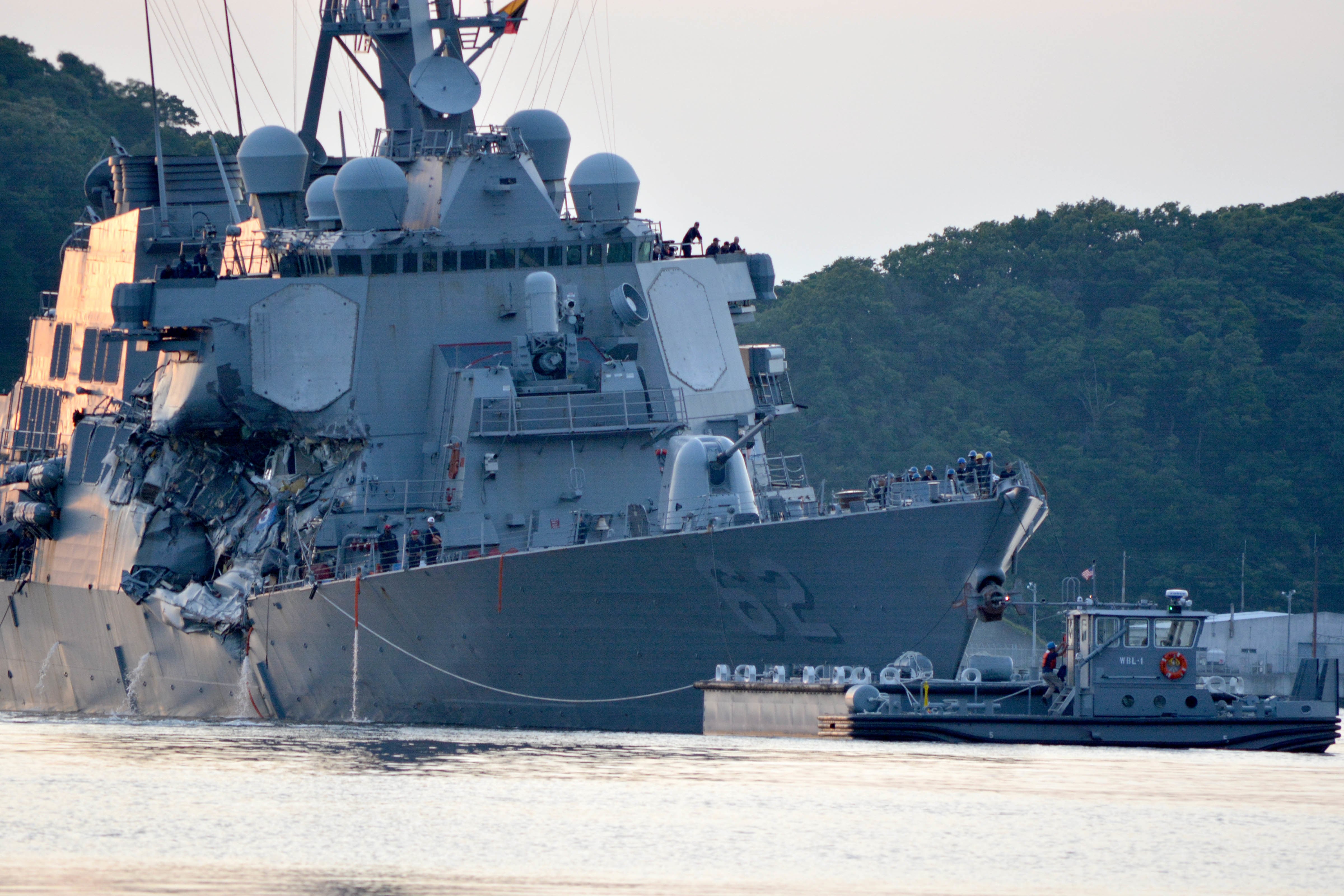When Navy Rear Adm. Brian Fort stepped aboard the guided-missile destroyer Fitzgerald in the aftermath of the 2017 collision with a commercial cargo ship, everything was off.
Any warship would seem a little off after a catastrophe that claimed the lives of seven sailors, but this was different.
“It didn’t look right, smell right, sound right,” Fort said during a hearing last year for a Fitzgerald officer facing court-martial in the wake of the June 17, 2017, disaster.
After gazing at the gash in the hull through which gushed the seawater that drowned the Fitz’s dead, Fort and his team of investigators walked to the destroyer’s electronic nerve center, the combat information center everyone calls the “CIC.”
It hadn’t taken a direct hit from the bow of the Philippine-flagged ACX Crystal, but it was trashed nonetheless and smelled like urine.
He found a pee bottle that had tipped and spilled behind a large-screen display. Fort’s eyes started to take over for his nose, and he took it all in.
“There was debris everywhere,” Fort said under oath. “Food debris, food waste, uneaten food, half-eaten food, personal gear in the form of books, workout gear, workout bands, kettlebells, weightlifting equipment, the status boards had graffiti on them.”
“I’d never seen a CIC like that in my entire time in the Navy,” the surface warfare officer of more than 25 years recollected.
The more Fort looked, the worse it got: broken sensors that were reported for repairs but never fixed, schedule changes ordered by superiors high above the Fitz’s command triad that delayed crucial maintenance, taped-up radar controls and, worse, sailors who had no idea how to use the technology.
About six weeks after the Fitzgerald collision, Fort signed and submitted his damning internal report to superiors.
Designed in part to help federal attorneys defend against a wave of lawsuits from the owners and operators of the ACX Crystal and, indirectly, the families of the Fitz’s injured, traumatized and drowned, the Navy sought to keep Fort’s findings from the public.
But Navy Times obtained a copy of it and began stitching his details to a growing body of court testimony by the crew of the Fitzgerald to reveal just how much worse conditions were on the destroyer than the Navy previously shared with the public.
What it all reveals is that a mostly green crew joined the Fitzgerald shortly after the warship left dry dock maintenance in early 2017.
They learned to make do with broken equipment, a lack of communication between departments and, especially in the CIC, a world in which failure had become “systemic across the board,” as Fort put it at last year’s hearing.
Or as his secret report described it, a lack of training in basic seamanship fatally combined with material deficiencies to create “a culture of complacency, of accepting problems, and a dismissal of the use of some of the most important, modern equipment used for safe navigation.”
The crew were simply "living in a world that had been accepted,” Fort said.
Mission over maintenance
The CIC runs a warship’s weapons systems and provides an extra set of electronic eyes for the bridge team, but that never happened throughout the night of the collision.
Although Fort’s report detailed a team of bridge watchstanders that were growing increasingly perplexed, then panicked, while trying to track multiple vessels inside a bustling maritime superhighway, CIC sailors told his investigators that it was a quiet night down there.
Fort found the CIC had “zero communication” with the bridge team before the Crystal loomed seemingly out of nowhere to spear into the Fitz’s starboard hull.
Much of Fort’s report explores how a state-of-the-art warship outfitted with expensive electronic sensors could go blind, but a key finding soon emerged: It wasn’t merely that they didn’t know they were blind. They didn’t know how to see.
Beyond the human waste and garbage collecting in the CIC, Fort’s investigators found CIC watchstanders who “demonstrated a lack of knowledge about radar functionality and material condition.”
Although the Fitz’s SPS-67 radar was listed as operational on the eve of the collision, it had actually fallen into a “degraded status,” according to the report.
CIC watchstanders couldn’t use their remote control to guide it because it also was broken.
A dead radar control button had been “covered by a piece of masking tape,” but Fort’s investigators couldn’t locate a casualty report chronicling the malfunction.
A work order had been generated to order, install and test new control buttons.
That was 194 days before the collision, Fort found.
And that long delay was far from unusual on board the Fitz.
Fort’s investigators interviewed a watchstander who told them that a SPA-25G radar console had been broken for at least four months before the collision.
Then there was the ship’s Voyage Management System.
Used to navigate the destroyer without relying on paper charts, the Fitz’s VMS was so freighted with problems that technicians cannibalized the set in the skipper’s quarters for parts to keep the system running.
But the Fitz’s VMS had started acting up while the destroyer was in dry dock in 2016 and early 2017, Fort found. The bridge unit would lock up and take several minutes to reset.
Technicians were supposed to peek at it in April of 2017 but “that visit was cancelled due to FTZ’s schedule change requiring the ship to be underway,” Fort wrote.
A “Bright Bridge” console also was listed as operational before the ACX Crystal accident.
But like the VMS, one console had been cannibalized for parts to fix another console and no casualty report was found for any of that, the report states.
A work order repair number, however, had been generated — 135 days before the collision, Fort found.
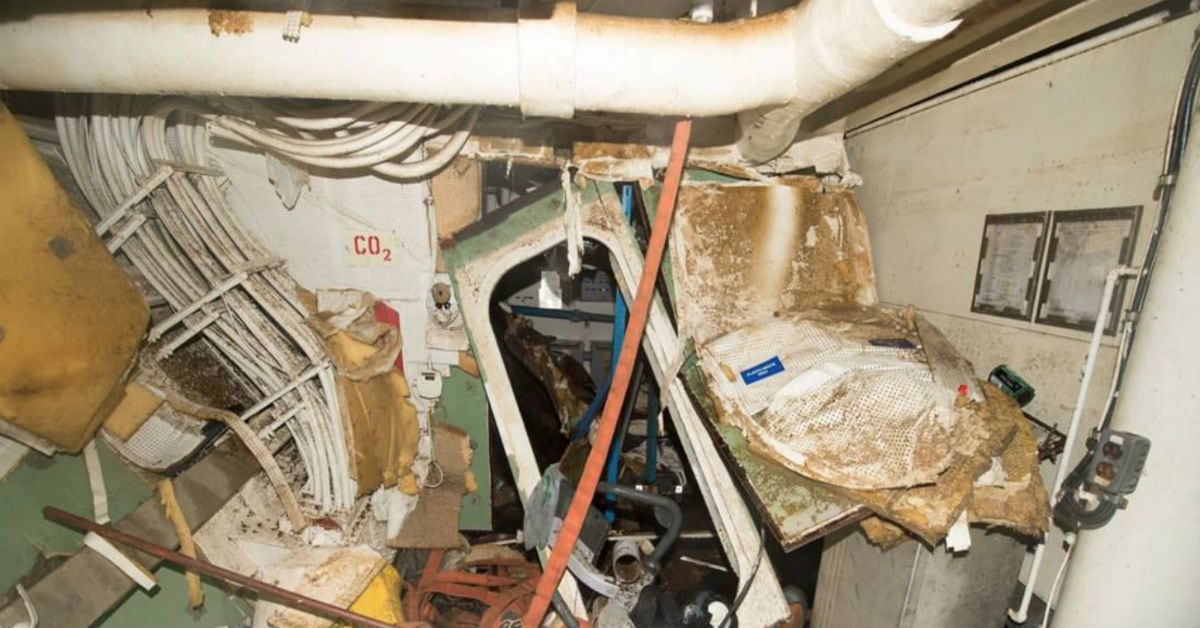
The ‘ghost in the machine’
On the night of the ACX Crystal disaster, the SPS-67 radar seemed plagued with gremlins but no one was available to fix it and sailors didn’t talk to each other about the electronic “clutter” they watched on the display, according to Fort’s report.
Beyond talking to each other inside the CIC or conversing with the bridge during their watch, the sailors there also had “zero communication” with other onboard departments for vital tasks like turning the radar, Fort later testified.
“Most of these folks we interviewed were not even aware that the radar-set controller was out of commission or what functionality they did or did not have, or what ability they had to even control it,” he said.
While the crew could’ve turned to an auto-track feature on the SPS-67 radar, they didn’t use it “because they ‘don’t want to mess it up,’” the report states.
“It was generally accepted that using the auto-tracking feature caused problems with the radar, and so it was just turned off,” Fort added during the hearing. “And folks accepted that.”
That’s why a CIC petty officer worked in manual mode, punching a button 1,000 times in an hour just to track four of five vessels, when the radar could’ve auto-tracked 50 contacts for him, Fort testified.
“That’s a lot of activity, but it’s not really what I would call vigilant activity,” Fort said.
Fort’s report found that other sailors barely fathomed the rudiments of radar.
“One watchstander said he has routinely seen the radars poorly adjusted to the point that visible targets would not show up,” Fort wrote. “One watchstander stated seeing other watchstanders seek out (a supervisor) for help on radar tuning, and receiving the response, ‘do it how you like it.’”
Electronic technicians said users reported problems that really were just operator errors.
“Another watchstander called to complain that the radar was not acquiring targets, when in fact the watchstander did not know what actions were necessary to acquire a target,” Fort wrote. “Watchstanders will use the rain adjustment features when there is no rain.”
At last year’s hearing, Lt. Cmdr. Ritarsha Furqan, a former Fitz officer who left the ship before the collision, attributed some bugs in the SPS-67’s auto-tracking system to “a ghost in the machine.”
But she said when the Fitzgerald got back to port in Japan, technicians couldn’t replicate the problems and it was never fixed.
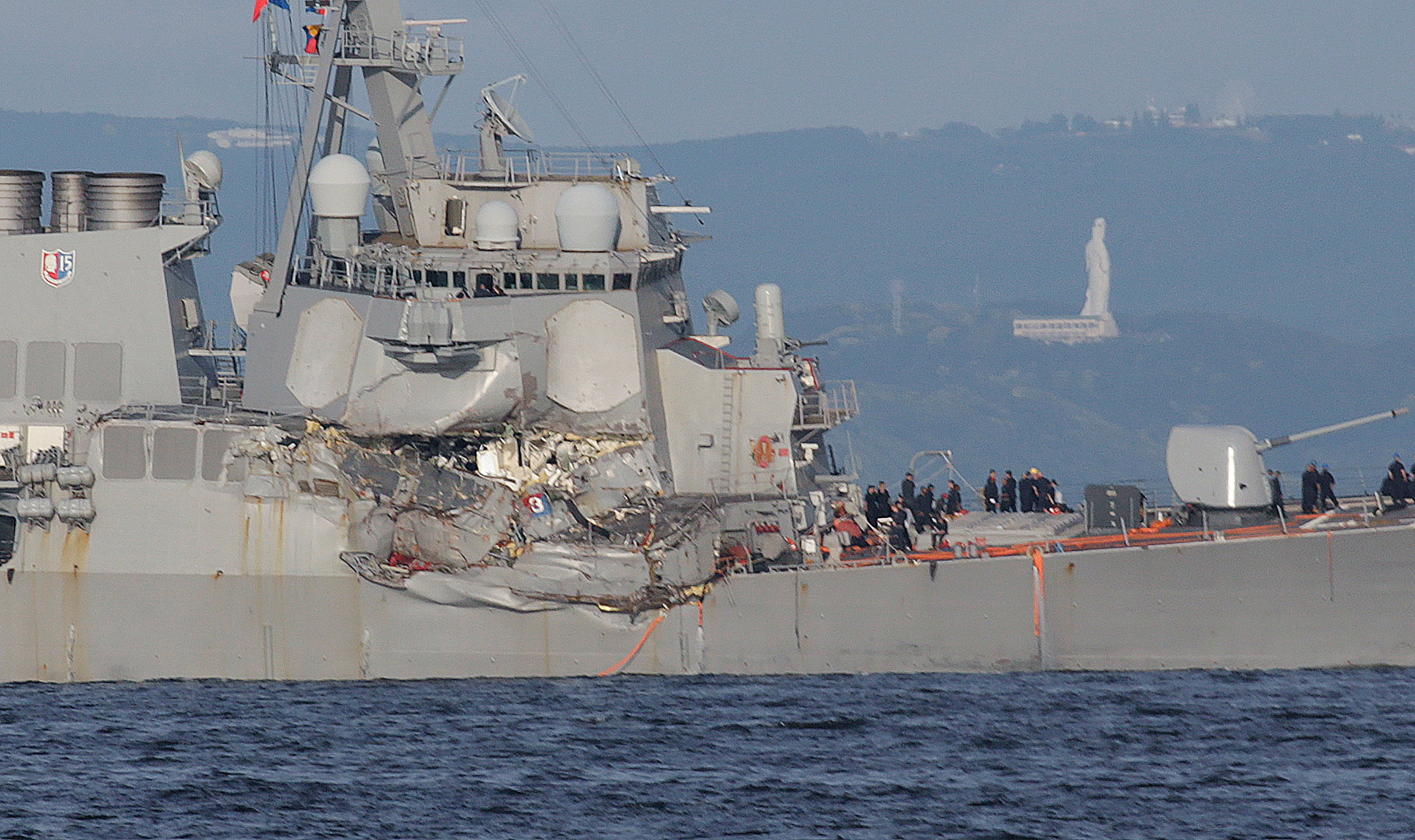
Shorting out
All of this matters because how the Fitzgerald was described in public reports often doesn’t tell the full story, or at least a fuller version that emerges in the Fort report and the accumulating testimony of investigators and former sailors on the warship.
For example, Navy leaders have publicly stated that the crew was not using the ship’s Automatic Identification System, or AIS, to gather information on nearby vessel traffic.
But Fort determined that Fitz’s sailors avoided the AIS laptop because it constantly crashed. It couldn’t be moved because jostling a cable would short out the array.
Fort found it tucked behind other consoles in the CIC. Onboard technicians had told their shipmates not to budge the laptop “because the cables were sensitive,” he wrote.
Furqan testified that when she served on the Fitz, the AIS had been loaned to the warship so they were limited in the upgrades and maintenance they could perform on it.
“During my tenure, the laptop failed at least once so we had to…wait for a new laptop to be mailed out to us,” Furqan said. “It would periodically lock up, and we would be unable to unlock it even with the correct password, so we’d have to reboot the entire laptop and try again.”
A division has developed within the Navy over what all this means when it comes to finding fault and dispensing justice.
Fort’s testimony and his report often seem to be grappling with how to parse out the blame.
When should shipboard leaders be held to account for failures? How much can those failures be ascribed to bad superiors on board the Fitz, at the destroyer squadron and 7th Fleet, even higher up the chain of command?
There are real world consequences for these distinctions.
Lt. Natalie Combs, the senior CIC officer during the collision, “was derelict in the performance of her duties,” Fort’s report states.
But Cmdr. Anthony Johnson, the investigating officer presiding over her Article 32 hearing, heard the same evidence and recommended that she skip court-martial proceedings and go instead to a board of inquiry to determine if she should remain on duty.
Johnson was overruled by Adm. James Caldwell, the Navy’s Consolidated Disposition Authority in charge of meting out justice in the Fitzgerald and McCain cases.
Her trial is slated to start Feb. 25.
RELATED
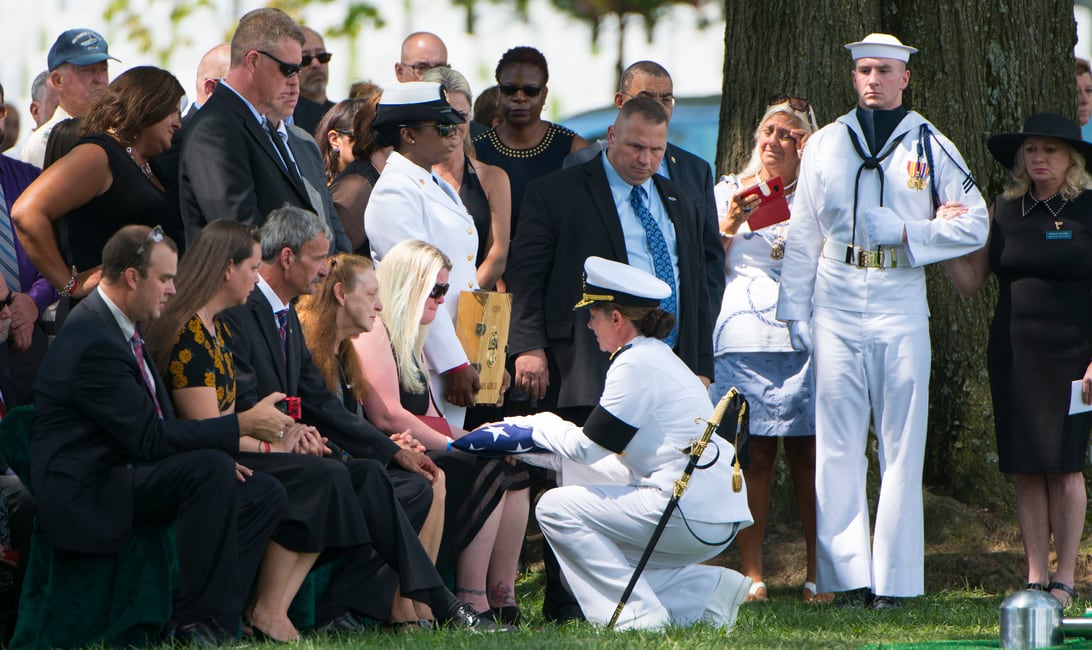
RELATED
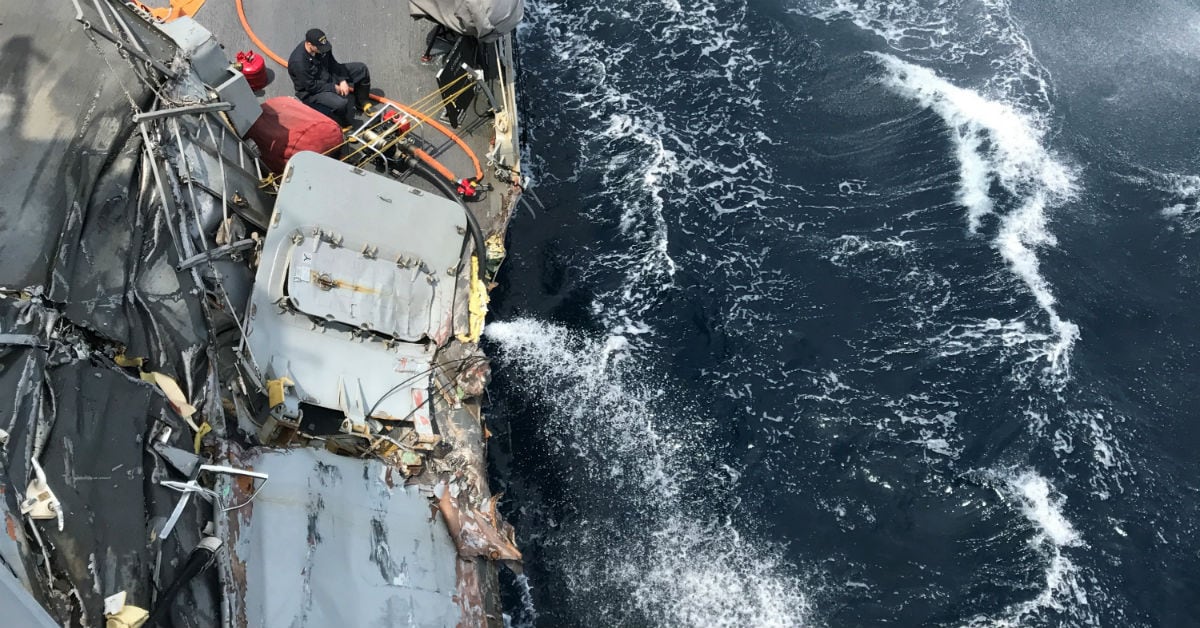
RELATED

RELATED
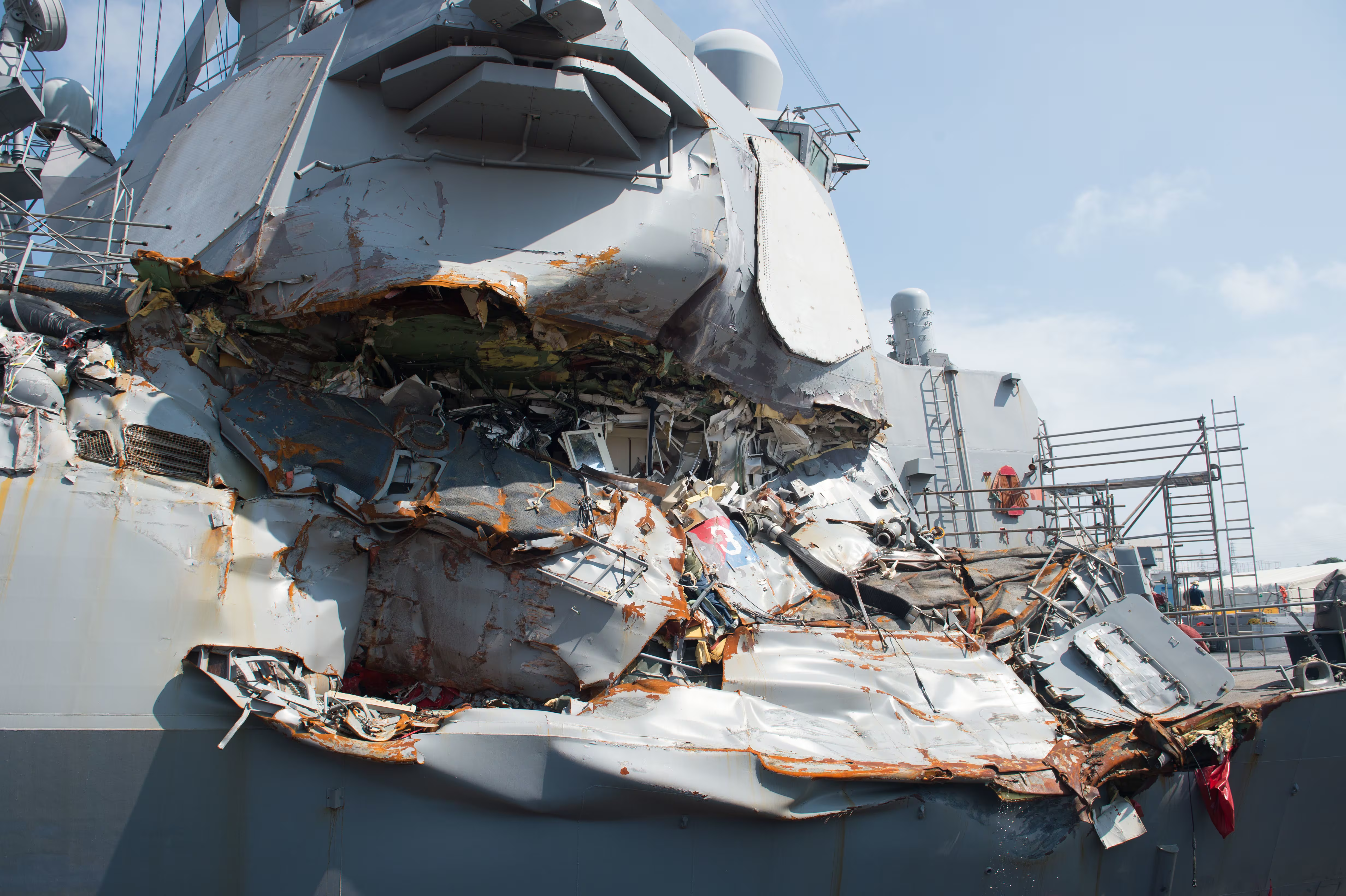
Geoff is the managing editor of Military Times, but he still loves writing stories. He covered Iraq and Afghanistan extensively and was a reporter at the Chicago Tribune. He welcomes any and all kinds of tips at geoffz@militarytimes.com.
